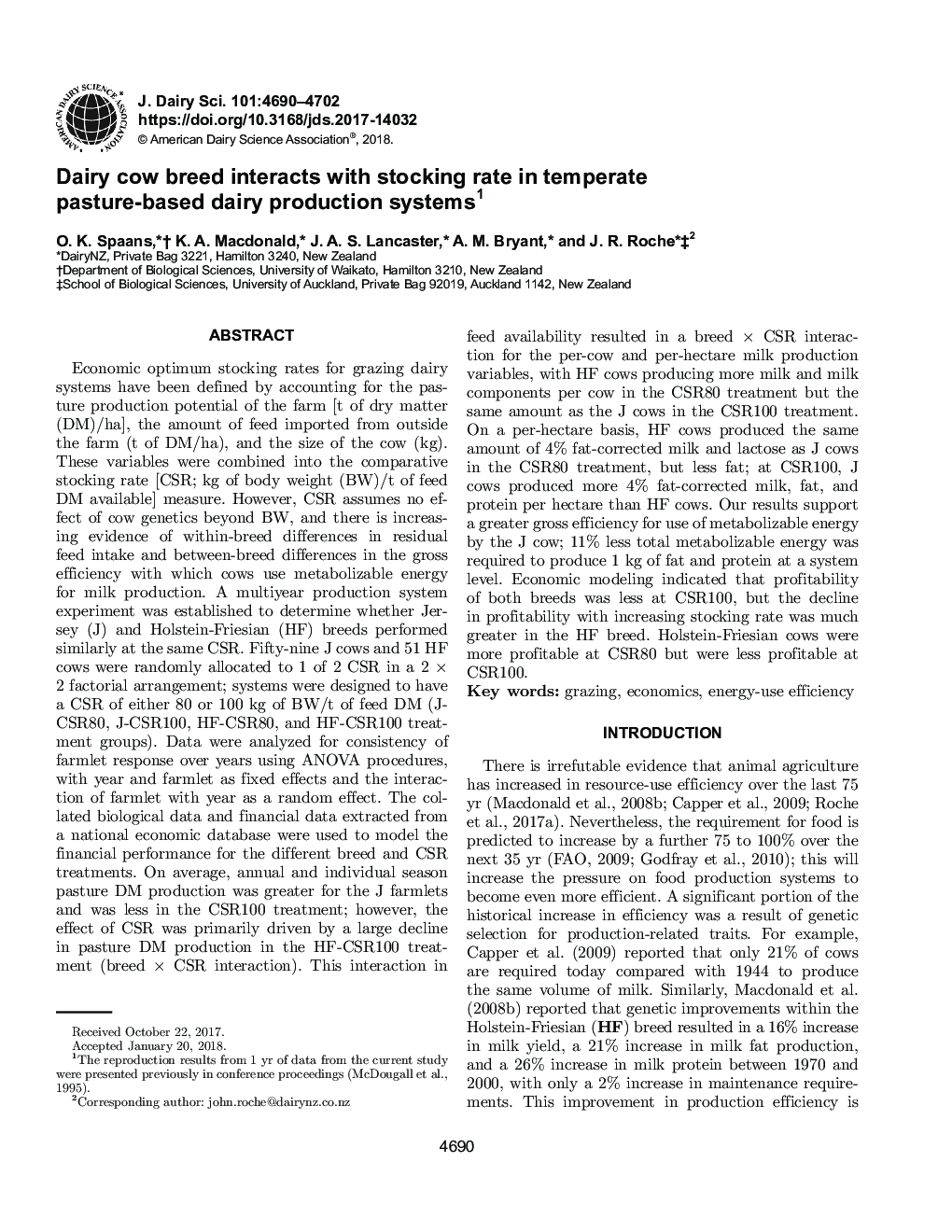| کد مقاله | کد نشریه | سال انتشار | مقاله انگلیسی | نسخه تمام متن |
|---|---|---|---|---|
| 8501453 | 1553840 | 2018 | 13 صفحه PDF | دانلود رایگان |
عنوان انگلیسی مقاله ISI
Dairy cow breed interacts with stocking rate in temperate pasture-based dairy production systems
ترجمه فارسی عنوان
نژاد گاو شیری با میزان انبارداری در سیستم تولید لبنیات مبتنی بر مرتعی مواجه می شود
دانلود مقاله + سفارش ترجمه
دانلود مقاله ISI انگلیسی
رایگان برای ایرانیان
کلمات کلیدی
چرا؟ اقتصاد، بهره وری انرژی،
موضوعات مرتبط
علوم زیستی و بیوفناوری
علوم کشاورزی و بیولوژیک
علوم دامی و جانورشناسی
چکیده انگلیسی
Economic optimum stocking rates for grazing dairy systems have been defined by accounting for the pasture production potential of the farm [t of dry matter (DM)/ha], the amount of feed imported from outside the farm (t of DM/ha), and the size of the cow (kg). These variables were combined into the comparative stocking rate [CSR; kg of body weight (BW)/t of feed DM available] measure. However, CSR assumes no effect of cow genetics beyond BW, and there is increasing evidence of within-breed differences in residual feed intake and between-breed differences in the gross efficiency with which cows use metabolizable energy for milk production. A multiyear production system experiment was established to determine whether Jersey (J) and Holstein-Friesian (HF) breeds performed similarly at the same CSR. Fifty-nine J cows and 51 HF cows were randomly allocated to 1 of 2 CSR in a 2 à 2 factorial arrangement; systems were designed to have a CSR of either 80 or 100 kg of BW/t of feed DM (J-CSR80, J-CSR100, HF-CSR80, and HF-CSR100 treatment groups). Data were analyzed for consistency of farmlet response over years using ANOVA procedures, with year and farmlet as fixed effects and the interaction of farmlet with year as a random effect. The collated biological data and financial data extracted from a national economic database were used to model the financial performance for the different breed and CSR treatments. On average, annual and individual season pasture DM production was greater for the J farmlets and was less in the CSR100 treatment; however, the effect of CSR was primarily driven by a large decline in pasture DM production in the HF-CSR100 treatment (breed à CSR interaction). This interaction in feed availability resulted in a breed à CSR interaction for the per-cow and per-hectare milk production variables, with HF cows producing more milk and milk components per cow in the CSR80 treatment but the same amount as the J cows in the CSR100 treatment. On a per-hectare basis, HF cows produced the same amount of 4% fat-corrected milk and lactose as J cows in the CSR80 treatment, but less fat; at CSR100, J cows produced more 4% fat-corrected milk, fat, and protein per hectare than HF cows. Our results support a greater gross efficiency for use of metabolizable energy by the J cow; 11% less total metabolizable energy was required to produce 1 kg of fat and protein at a system level. Economic modeling indicated that profitability of both breeds was less at CSR100, but the decline in profitability with increasing stocking rate was much greater in the HF breed. Holstein-Friesian cows were more profitable at CSR80 but were less profitable at CSR100.
ناشر
Database: Elsevier - ScienceDirect (ساینس دایرکت)
Journal: Journal of Dairy Science - Volume 101, Issue 5, May 2018, Pages 4690-4702
Journal: Journal of Dairy Science - Volume 101, Issue 5, May 2018, Pages 4690-4702
نویسندگان
O.K. Spaans, K.A. Macdonald, J.A.S. Lancaster, A.M. Bryant, J.R. Roche,
